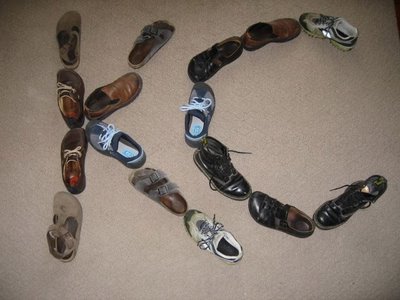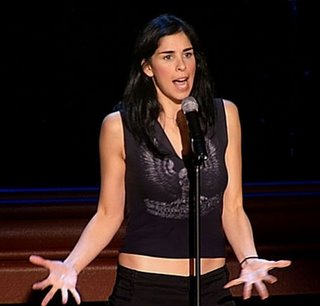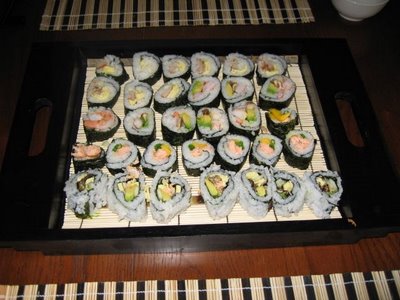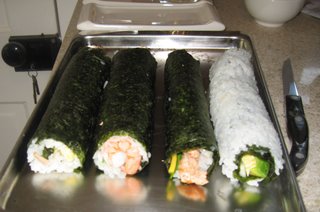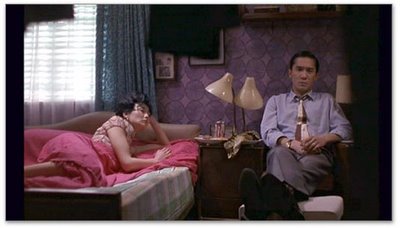
I tried to watch the film "Beg" on my day off, but it was too weird. I needed Rick to help me see what was so great about it. It had won some indie film awards. Rick's like a weird-film aficionado. Weird as in strikingly odd, strange, bizarre, fantastic, to the point of annoying others. I was annoyed by "Beg" because I didn't get it. It's like Abstract Expressionism; I need someone to explain to me why it's so awesome, and when they do, I usually agree that it is indeed awesome.
One thing that tickles me about Rick is how seriously he takes film. He treats it like the art form it is. I can't walk into a movie even 30 seconds late because I feel like I will miss something crucial. Everything is crucial. It'd be like going to a museum to see a Picasso and having part of it hidden behind a curtain. Rick appreciates that quirk of mine because he shares it.
He wrote the guest post below about his favorite films. Many of them — "Blue," "Dead Man," "The Unbelievable Truth" — are my favorite films, too, and they were even before we met and/or talked about them as such. This makes me feel a special kinship with him. Other movies on his list I have never seen, but I plan to because I know they will be worth my time — and because then I won't feel so left out of his and George's new life together.
••••••••••••
The Web site
"Filmaffinity" has been mentioned on this blog a few times now, and for those who don't know, it is a site where you rate a bunch of movies and then, by some obscure algorithm, you are matched up with 20 “soul mates” who share (in varying degrees) your tastes in film. The site has some good extras, like a parallel to the set of soul mates composed of your friends and the option to create sundry lists of movies for others to see. So far, most of the people on the site seem to be Spanish, but I'm doing my part to plug it in North America.
As expected, the site has led me to some interesting movies I might never have seen otherwise. And of course I get the smug satisfaction of knowing that my ever-brilliant soul mates despise most of the same all-salt, all-fat, all-sugar, no-spice, no-bitterness, baby-food-textured Hollywood fast-food product that I despise. (OK, I can see why people might like having sycophants.) Besides these goodies, there have also been some effects that I didn’t expect. I want to talk about one of those here. And it starts with the idea of rating movies.
People like lists of the best things. Or at least they like to argue over such lists. I can remember — sort of remember — many an undergrad bull session where there were beer-fueled arguments over “the greatest _____.” Always included were the greatest bands, the greatest songs, the greatest guitarists, and maybe a few other music lists. If the group was mostly or entirely guys, then the lists might soon veer off into the greatest quarterbacks, or the hottest actresses or supermodels. But if there were some women present, we had a better chance of getting to the greatest movies. I wish I could report what the contenders were. But at this remove of time and space, I can do no more than assure you that the proposals were at least as dismal as you would expect from a noisy crowd of drunken 20-year-olds.
Perhaps also created for purposes of argument, various movie critics, magazines, and organizations have put out “the 100 best movies” list. I think there is some sort of union rule requiring the list to be 100 titles long. (I’ll look into that). But I don’t care for these lists. Is “Citizen Kane” really the greatest movie ever made? Well now, thanks to Benjamin Schwarz of The Atlantic Monthly, I have a good answer to that question. No, the greatest movie ever made is Orson Welles’ next movie, “The Magnificent Ambersons.”
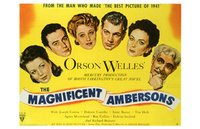
However, before Welles finished the post-production, he traipsed off to Rio for a war propaganda gig — during Carnival — leaving this best-ever film in the hands of a resentful studio. So Welles’ “Ambersons” piled up on the cutting-room floor, and we now have only RKO’s hack job to hint at what the-world’s-most-talented-boy was up to. How romantic. I’ve not seen “Ambersons” and have no plan to. That is part of the romance.
OK, now that we are done with that best-ever nonsense, let’s go back to Filmaffinity and favorite films. Over the last year I’ve rated 1,172 movies on the site. They have many more than that, of course, and they are sadly missing some very good, if obscure, ones. But they have a big chunk of the movies you have a hope of finding. This site has been yet another case of the Internet showing me something I didn't know before, but this time it is about myself. Before last year, if you had asked me what my favorite movies were, I’d have given you a few titles that would vary depending on my mood and recollection of the moment. But now I have something approaching a systematic answer to the question. I’ve tried to be very stingy with the highest rating, so out of 1,172 movies, 27 got a “10,” which is just over 2 percent.
Armed with such an objective list, do I now know anything about what it takes to become one of my favorite movies? Maybe not. The list is kind of odd, even to my eyes. Is that a good thing? Should I proudly be an iconoclast? Even for that my credentials look weak. There are, for instance, a few of the perennials that grow very high on the 100 greatest lists. “The Godfather” seems to make almost everyone’s list, and “Sunset Boulevard” is almost as common. (George gives both of these a “10” as well). I also have films that are found at lower elevations on those lists but always seem to be there. Some of these are classic icons that seem as necessary as bits of geography. How could we live in a world that didn't have “The Seventh Seal”? Might as well imagine that we didn’t have Sweden at all.
Looking at my films, some might say I'm into minimalism. And, in a way, that might be true. One of my movies is “Pickpocket” by the French New Wave filmmaker Robert Bresson. He is often considered a minimalist because he used non-actors and refused to let them do things that we often consider to be acting. He required them to keep their hands at their sides, to give their lines in an inflection more like reading than speaking, and to look down at the floor and then back at the camera so as to disrupt their facial expressions. He might also be considered minimalist because the plot could, and sometimes was, summarized in the title of a film: “A Man, Condemned to Death, Escapes.”

But Bresson’s films are actually very dense and pack a lot into a short running time. The difference is that he leaves out the usual fare so as to not crush his delicate finery. Two American filmmakers with movies on my list are influenced by Bresson: Hal Hartley and Jim Jarmusch. The influence is more obvious in the case of Hartley. He also uses a formal style that eliminates much of traditional acting. To this he adds a distinctive and offbeat comedic sensibility that creates weird films that don’t go anywhere near slapstick, even if they have a guy bumming around with a grenade in his hand or a cop wrestling with a nun. His “Unbelievable Truth” is on my list, but “Trust” and “Simple Men” could almost be as well. Bresson’s influence on Jarmusch is less straightforward. Of his two on my list, you can perhaps see it most in the early black-and-white film “Stranger than Paradise,” which is wonderful to watch even as very little happens. My other Jarmusch is a return to black and white after he did a few in color. It at least has the Bresson touch of being summed up in the title: “Dead Man.”
I’ve two other films with a different kind of minimalism:

“Blue” by Krzysztof Kieslowski and “In the Mood for Love” by Wong Kar-Wai. In neither of these films is there too much said or too much done. But they are both amazingly visually rich and both very effective in their use of sound to explore mood. Perhaps I like them both for these similar elements.
But not all my films are quiet. There is a movie that makes George’s list, which, if I see it again, might very well make mine. It is a maximally unquiet movie: Emir Kusturica's “The Underground.” The first Kusturica that I saw was “Black Cat, White Cat.”
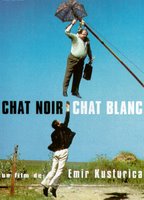
This was a very fun film, and very frantic (and noisy). I thought at the time that this is what Shakespeare would make if he were alive today. Who could doubt he would be making movies, and I’m sure his comedies would be like “Black Cat.” With this Shakespeare idea in mind, I saw “The Underground.” It is even louder and more frantic than “Black Cat.” It is like no other movie ever made. Some people might say that it is surreal, but they are wrong. It is very weird, sure, but not in any of the ways we are used to from surrealism, or even from Dada or Absurdism. It has this magic whereby it makes a lot more sense than it seems to have any right to — not absurd at all. No, I think it best to not try to say what it is like since it isn’t. If Shakespeare saw this one, he would say, no, I wouldn’t make a film like that; I wouldn’t have thought it possible.
Lest you think that only artsy think-pieces are on my list, I’ll leave you with the two musicals that make it: “The Rocky Horror Picture Show” and “Hedwig and the Angry Inch.”
 When my sister's daughter was four or five she proudly showed me her new shoes and said, "Them kill bugs."
When my sister's daughter was four or five she proudly showed me her new shoes and said, "Them kill bugs."